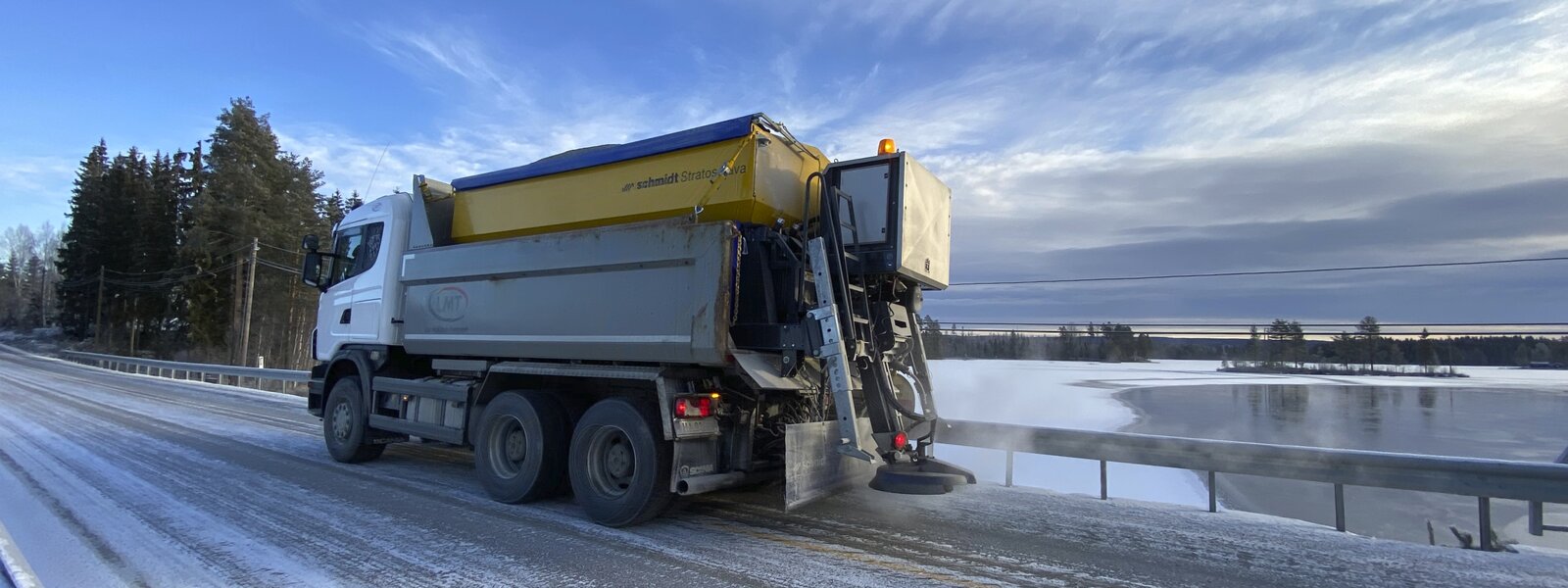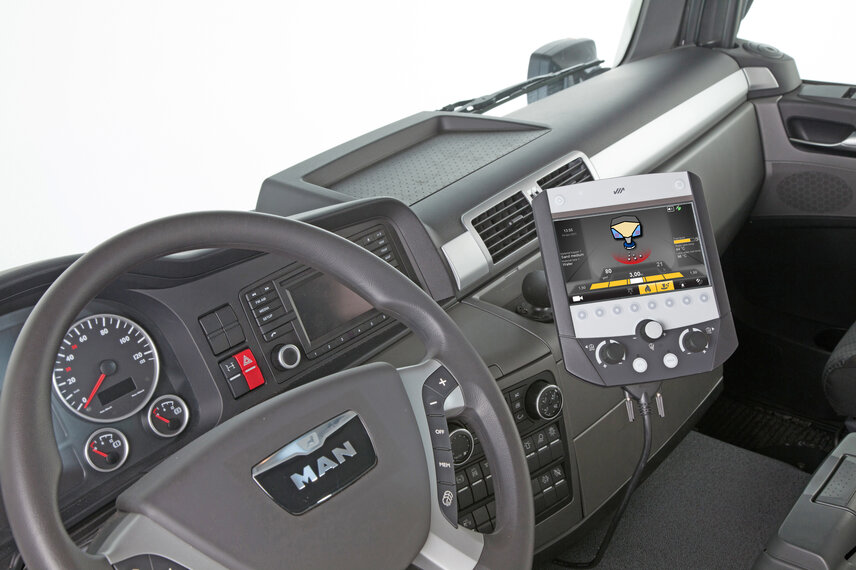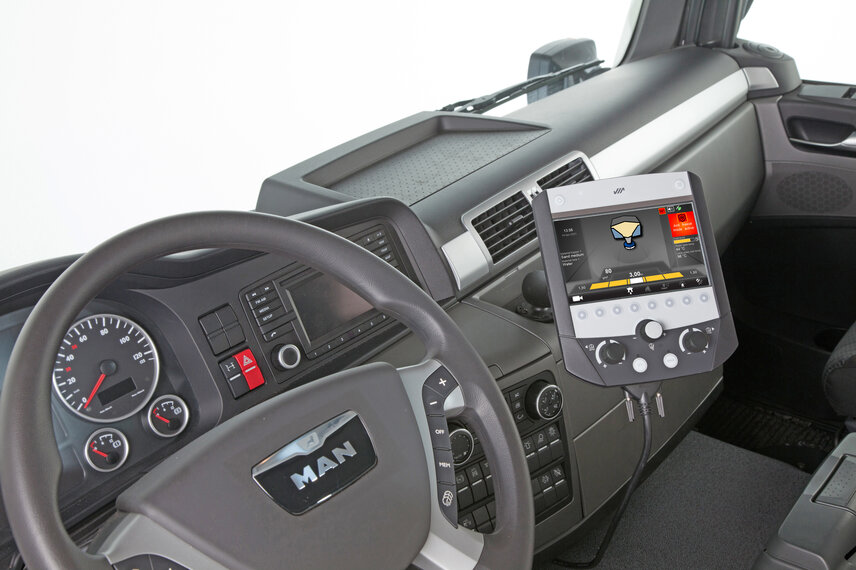Schmidt |Spreader|Stratos Lava
The Lava principle
In addition to the normal grit hopper and distribution system, the Stratos Lava has a heating unit and side-mounted liquid tanks with integrated baffles, which are made of impact-proof polyethylene. This makes it suitable for normal winter road maintenance as well as for operating in the most extreme conditions.
Before starting the Lava application, the water is heated to 45° degrees by a diesel-powered heating unit and pumped into the tanks. During the spreading process, hot water is sprayed onto the spreading agent, and this warmed mixture is spread onto the road surface by the distribution system. Due to its high temperature, this partially sinks into the icy road conditions and creates a permanently non-slip surface.

Mounting and demounting systems
The Stratos Lava can be equipped with one of the two mounting and demounting systems:
- Base frame for demount legs, tipper body or fixed body, suitable for parking with filled hopper and tanks
- RoRo system, suitable for parking with filled hopper and tanks
Dosage and conveyor system
The Stratos Lava benefits from a reliable belt conveyor system, suitable for all spreading materials. An integrated belt relief, an integrated belt cleaning system and a dosing slide with integrated lump breaker function ensure trouble-free operation.

Pre-wet equipment
The laterally arranged water tanks are made of impact- and cold-resistant polyethelene with integrated baffles. They are filled via a stainless steel filling and draining connection at the rear with an integrated tap/filter combination. The suction point is located in the middle of the tank, which makes operation in otherwise unfavourable mountain regions possible without any problems. A solid, directly hydraulically-driven gear pump ensures automatic speed regulation when brine is added.
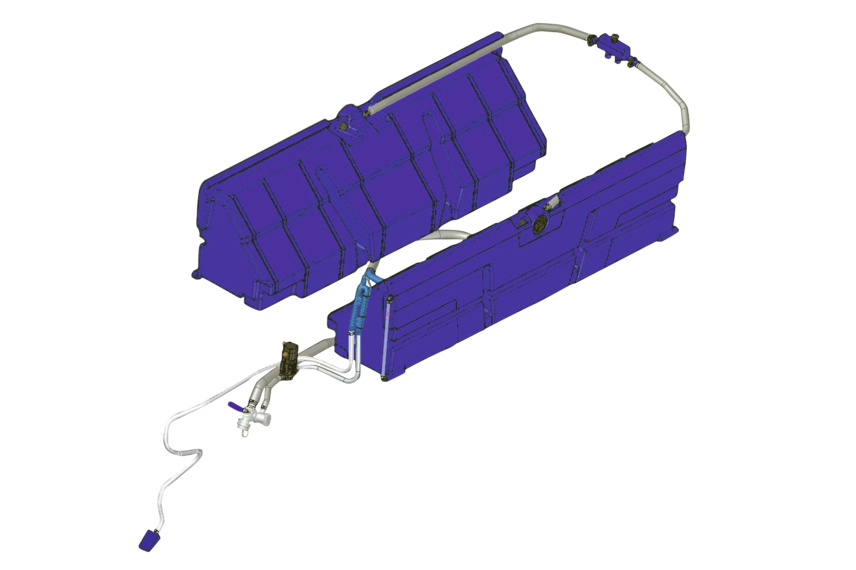
Distribution system
The premium mixing system of the Stratos series 4 - 12 m³ is also used on the Stratos Lava. The optimum material flow is ensured by a closed PE chute and an optimised angle of the outlet. The spreading material hits the spreading disc centrally and is perfectly distributed to the discharge edge. This creates a homogeneous mixture, which is dynamically discharged as a bundled ejection jet in such a way that the effects of the wind are minimised.
The swivel technology of the spreading disc allows a symmetrical or asymmetrical spreading pattern to be adjusted manually or electronically via the control panel. Thanks to this technique, the size of the spreading area is maintained and a precisely defined spreading pattern is achieved. Up to 3 m can be spread in Lava mode and up to 10m in normal mode.
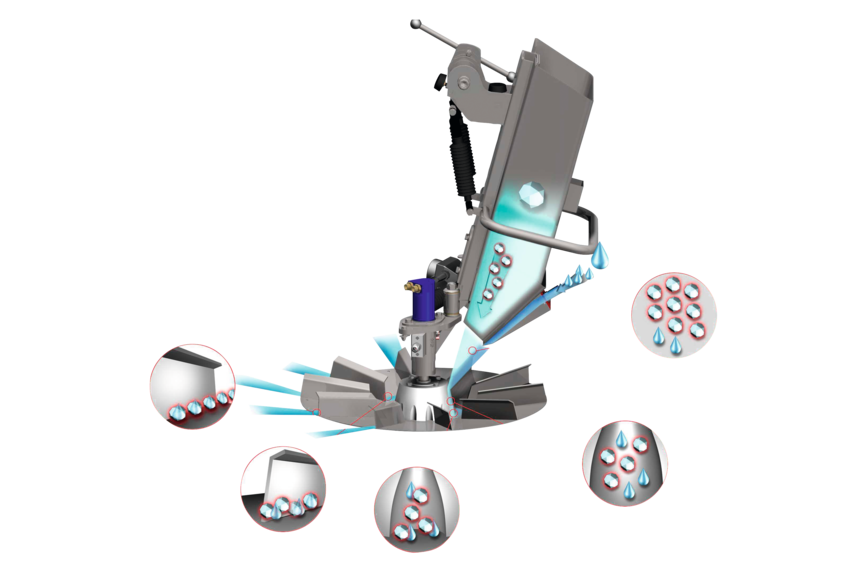
Drive, control and information systems
The Stratos Lava is driven by the existing hydraulic system of the carrier vehicle and operated via a fully road-speed related ES control system with additional Lava functionality, which, thanks to easy-grip click-turn knobs and illuminated pushbuttons, ensures that the driver can concentrate on the traffic and road conditions during his work. The ES control panel can be used to set both the normal wet salt and the special Lava functions, such as the preheating temperature and the frost protection function.
